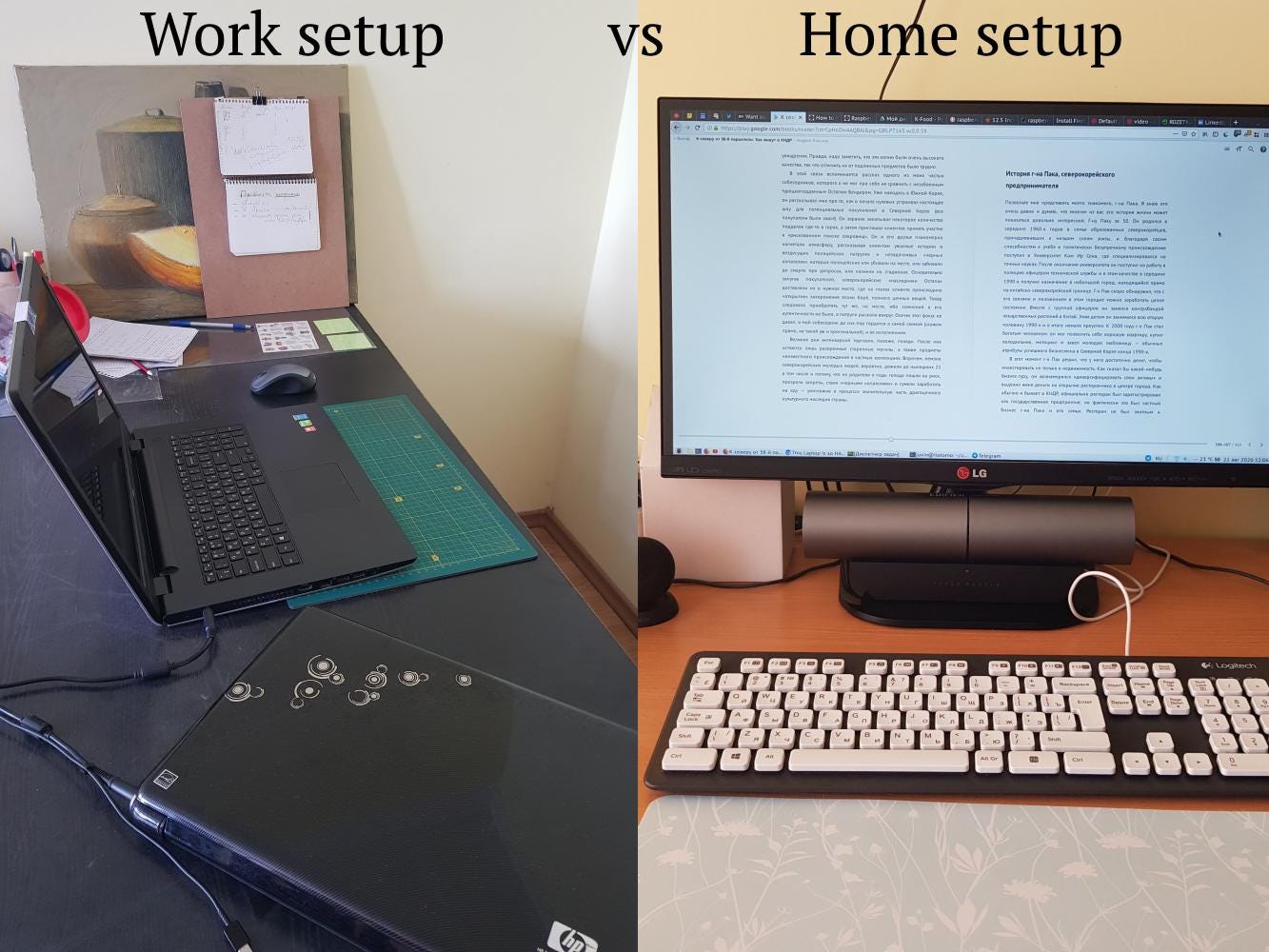Dividing working and personal spaces with Raspberry Pi
Keeping your sanity while working from home
If you work at home, and use single laptop both for your leisure activities and for work, it can be hard to “leave work at work”. There are few solutions to this.
Using separate users for “home” and “work” in your laptop
This definitely could work as a compromise. You can just create a user called “work” and use it for all your job activities. Cons to that are that you will need to switch back and forth between users, and that is not as smooth in an old computer as it could be, and that you will be staring at the same screen and touching the same keyboard both working and relaxing. Your body needs hints to easily switch off from work, to understand that “we’re at home, no need to think about that problem you are working on”.
Using separate PCs located in separate places
I bought Raspberry Pi 4 8 GB specifically to use it as a home PC. It is powerful enough to watch YouTube and listen to music, chat in a messenger or browse the web, including online banking. Sometimes it can think for 30 seconds before making video fullscreen, or run out of its 8 GB RAM if I open too much tabs, but those all are not a serious problems for a PC that I am using for leisure. If it runs out of RAM, I just restart it by pulling out the power block from power socket and putting it back in, and in a minute I am already logged in and Firefox remembers what tabs were open.
The real good thing about this setup is that I “leave my work at work” when I go away from my working desk. Though it is in the same room and I can see it, it reduces stress so much, and improves working focus greatly, because I am not thinking unnecessarily about job tasks when I should relax and refresh. When I am at work, on the contrary, I can stay focused because everything around me says that I am at work, and there are no more distractions that usually at an office desk. Keeping it separate is enough to trick your brain, and this separation proved to be working for me.
I am using Kubuntu on my Raspberry Pi, if you’re interested you can read more about my Kubuntu setup and application choices.

